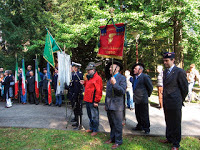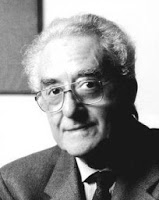Giovanni Caselli - inventor
Priest and physicist who created world’s first ‘fax' machine
Giovanni Caselli, a physics professor who invented the pantelegraph, the forerunner of the modern fax machine, was born on this day in 1815 in Siena. Caselli developed a prototype pantelegraph, which was capable of transmitting handwriting and images over long distances via wire telegraph lines, in 1856, some 20 years ahead of the patenting of Alexander Graham Bell’s telephone in the United States. It entered commercial service in France in 1865. The technology was patented in Europe and the United States in the 1860s, when it was also trialled in Great Britain and Russia, but ultimately it proved too unreliable to achieve universal acceptance and virtually disappeared from popular use until midway through the 20th century. Caselli spent his early years in Florence studying physics, science, history and religion and was ordained as a priest in the Catholic Church when he was 21. In 1841 he was appointed tutor to the sons of Count Marquis Sanvitale of Modena in Parma, where he spent eight years before his time there was abruptly ended by expulsion from the city as a result of his participation in an uprising against the ruling House of Austria-Este. Read more…
__________________________________________________________
Ferruccio Ranza - World War One flying ace
Fighter pilot survived 57 aerial dogfights
Ferruccio Ranza, a World War One pilot who survived 465 combat sorties and scored 17 verified victories, died on this day in 1973 in Bologna, at the age of 80. Ranza, who also saw service in the Second World War, when he rose to the rank of Brigadier General, was jointly the seventh most successful of Italy’s aviators in the 1914-18 conflict, and would be placed third if his eight unconfirmed victories had been proven. In all, he engaged with enemy aeroplanes in 57 dogfights. The most successful Italian flying ace from the First World War was Francesco Baracca, who chalked up 34 verified victories before he was killed in action in 1918. Ranza served alongside Baracca in the 91st Fighter Squadron of the Italian air force, the so-called ‘squadron of aces’. Ranza was born in Fiorenzuolo d’Arda, a medium-sized town in the province of Piacenza in what is now Emilia-Romagna, in 1892. Both his parents, Paolo and Maria, were teachers. After attending the Istituto Tecnico ‘Romagnosi’ in Piacenza, he joined the Italian army in December 1913. He was a second lieutenant in the 1st Regiment of Engineers when the First World War began in 1914. Read more…
________________________________________________________
Leon Battista Alberti - Renaissance polymath
Architect with multiple artistic talents
The polymath Leon Battista Alberti, who was one of the 15th century’s most significant architects but possessed an intellect that was much more wide ranging, died on this day in 1472 in Rome. In his 68 years, Alberti became well known for his work on palaces and churches in Florence, Rimini and Mantua in particular, but he also made major contributions to the study of mathematics, astronomy, language and cryptography, wrote poetry in Latin and works of philosophy and was ordained as a priest. He was one of those multi-talented figures of his era, along with Leonardo da Vinci, Michelangelo and, a little later, Galileo Galilei, for whom the description Renaissance Man was coined. Alberti was born in Genoa in 1404, although his family were wealthy Florentine bankers. It just happened that at the time of his birth his father, Lorenzo, was in exile, having been expelled by the powerful Albizzi family. Leon and his brother, Carlo, were born out of wedlock, the product of their father’s relationship with a Bolognese widow, but as Lorenzo’s only offspring they were given a privileged upbringing. Read more…
__________________________________________________________
Festa della Liberazione
Date of radio broadcast chosen for annual celebration
Today is a public holiday in Italy, one which in normal circumstances would see the whole country join together to celebrate the anniversary of the end of the Fascist regime with la Festa della Liberazione. Every year on this day, the end of the Nazi occupation of Italy is commemorated with parades and parties and many public buildings are closed. The Festa della Liberazione (Liberation Day) marks the day when Allied troops were finally able to liberate Italy. The date for the national holiday was chosen in 1946. It was decided to hold the Festa on 25 April, the date the news of the liberation was officially announced to the country on the radio. The marches and events customarily held on the day provide an opportunity for Italians to remember their fallen soldiers, in particular the partisans of the Italian resistance who fought the Nazis, as well as Mussolini’s troops, throughout the second world war. A ceremony is usually held at the war memorial in each city and town. It is also a festive occasion for many Italians, who enjoy the food festivals, open air concerts and parties taking place. Read more…














